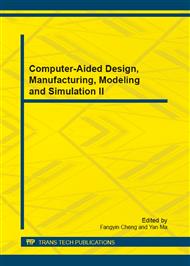p.551
p.556
p.561
p.566
p.571
p.576
p.581
p.586
p.592
Heavy Metal Pollution Analysis in Topsoil Based on BP and GA
Abstract:
Heavy metal pollution in Topsoil is increasingly serious. In the paper, we present a novel analysis method for heavy metal pollution in Topsoil using Back-propagation (BP) Algorithm and genetic algorithm (GA). Usually there were many methods, including differential equation, but accuracy of these algorithms is not high. To acquire position and analysis of heavy metal pollution, we introduce GA and BP neural network. First, we build BP model and acquire the optimal weights and thresholds of BP through optimization of GA. At last, we search for global optima position of heavy metal pollution sources by GA. Experimental results show that better performance can be obtained by combining GA-based BP and GA-Based optimization.
Info:
Periodical:
Pages:
571-575
Citation:
Online since:
December 2012
Authors:
Keywords:
Price:
Сopyright:
© 2013 Trans Tech Publications Ltd. All Rights Reserved
Share:
Citation:


